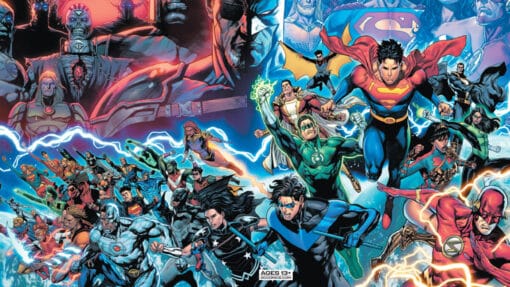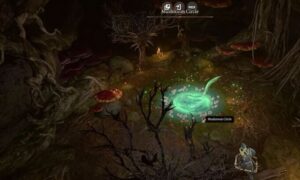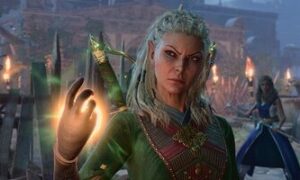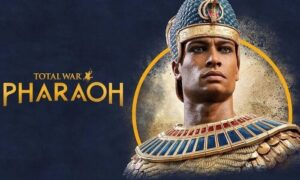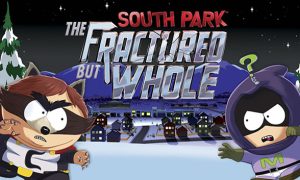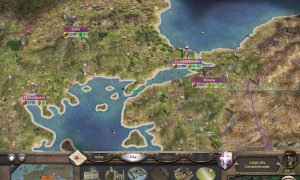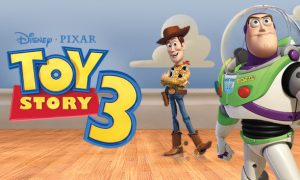Dark Crisis, Aquaman – Andromeda & The Endless Possibilities of The DC Universe
Two of the most popular titles currently on sale are Aquaman: Andromeda and Dark Crisis. They both come from DC Comics. The first is written by Joshua Williamson, illustrated by Daniel Sampere, and serves as the latest direct sequel to 1985’s crossover event, Crisis on Infinite Earths. This is the most recent continuity-free effort published under The DC Black Label imprint. It features a Ram V story and Christian Ward art.
These two mini-series share many similarities. Both stories are superhero tales that rely on dark as their central theme. However, the similarities end there as Dark Crisis represents the DC Universe’s limitations while Aquaman: Andromeda highlights the infinite possibilities.
This is not meant to be a dig at Sampere and Williamson. Dark Crisis on Infinite Earths (to use the “real” title) can be enjoyed on its terms. It is a fun crossover that follows the same path as its predecessors. It’s hard to ignore how tired it all is. Every plot point and character beat is grounded in DC canon, some elements of which are almost 40 years old.
Many fans believe continuity is the best part of a shared universe like DC’s. It adds more history and emotional weight to proceedings. This continuity-heavy approach to storytelling underlines how boring Dark Crisis is. It is a sign that the publisher’s admittedly rich IP is starting to run out of potential.
Williamson is credited for incorporating the cyclical nature of the DC crossover machine, mainly the meaninglessness and futility of death in a world where it’s seldom truly the end, into Dark Crisis’s narrative. Although it is possible to address the limitations of a story, it is not the same thing as breaking them free. After reading the first two issues, you will feel there is nothing the DC Universe can say about its characters and itself through a “Crisis.” crossover.
How could there be? Aside from Crisis on Infinite Earths, this fictional reality has seen Infinite Crisis and the optimistically named Final Crisis. Not to mention countless other cataclysmic events. It doesn’t matter how unique a story is. No matter how creative a team may try, it has almost always been done before.
This isn’t to say that DC Universe doesn’t have the potential for great stories. Aquaman: Andromeda, a comic book series, is an excellent example of how writers and artists can put a new spin on DC’s most iconic villains and heroes, provided they don’t have to adhere to the established DC canon.
It’s not like the Aquaman V and Ward envisioned is any different from his mainstream counterpart. Their King of Atlantis, a superpowered hero who can be found between the undersea and surface worlds and is willing to intervene when lives are in danger, is still there. The supervillain Black Manta is also a familiar antagonist that can cause him headaches. What has changed is the story Aquaman is supposed to be part of: a psychological horror tale unlike any Aquaman and his Justice League friends, have ever faced.
Yes, DC has fought off threats from the Alien, Predator, and Alien films with top-tier superheroes such as Aquaman. They even published licensed crossovers to tie in with those franchises. DC has highlighted the darker side of its core mythology in its Dark Nights: Metal and Death Metal events.
It’s not that DC’s mainstream output doesn’t include horror. Except for a few exceptions, like Dave McKean’s Arkham Asylum, A Serious House of Serious Earth, and Grant Morrison’s Arkham Asylum, A Serious Place on Serious Earth, whenever a DC A-Lister ventures into any vaguely edgy territory, superhero tropes will inevitably come in to protect us from the full impact. Aquaman: Andromeda is an exception to this rule. Ram V’s script consciously strips away any comforting veneer and plunges both the protagonist as well as the audience into a world that they aren’t fully prepared for.
Aquaman: Andromeda is different from Dark Crisis. It doesn’t just look different. Ward is free from the need to adhere to a standard superhero comic book aesthetic and uses a mix-media style, which includes pencils, pens, watercolors, and digital techniques. This gives the Black Label mini-series an incredibly distinct identity. Ward’s Aquaman: Andromeda’s work has a haunting, atmospheric quality that is more real than any Dark Crisis panel. Yet, there’s a certain beauty to it. It’s still DC Universe but exciting, frightening, and original.
Does this mean DC should cease publishing crossover events such as Dark Crisis? Or at least not entirely. There is still a market for this type of story. This includes comic book novices who don’t mind seeing variations of the same plot repeated repeatedly and long-time fans who find comfort in this kind of repetitive narrative. It does suggest that DC should focus its future on stories like Aquaman. And Andromeda, rather than on continuity-driven, conventional fare like Dark Crisis.
This is a risky move, especially considering the vast sales boost that brings with putting a new crossover on the shelves. There are long-term benefits to be considered, including how appealing a collection of highly accessible, inventive, “done in one” collections editions would be to both non-readers as well as lapsed fans. Imagine a DC Comics where the focus is on new stories and not recycling old ones.

